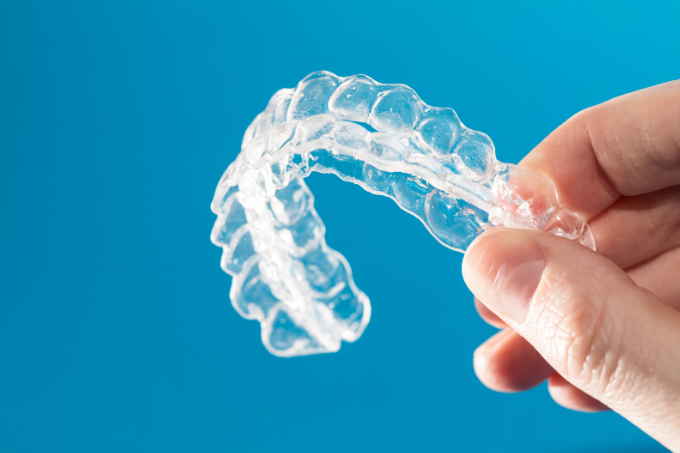If you’ve been told by your dentist that you need a dental crown, you may be wondering what that is and what to expect.
A dental crown is a type of restoration that is used to cover or “cap” a tooth. They are often recommended when a tooth has been damaged, lost a lot of its structure, or is severely discolored or mishappening. Dental crowns can be made from a variety of materials that can last five to fifteen years depending on the type and level of crown care.
In this article, we will provide a brief but descriptive guide on dental crowns. As you read, you’ll learn crucial information about these dental restorations regarding their purpose, the various materials and designs you can choose from, and what to expect from the procedure. To close, we’ll detail how to take care of your dental crowns to ensure their longevity and optimal dental health for you.
What Are Dental Crowns?
Dental crowns are one of the most common dental restorations people receive alongside fillings, implants, and bridges.
In essence, a dental crown is a type of cap or cover that is strategically placed over a portion or all your natural tooth. The overarching purpose of this is usually to provide some degree of coverage and/or protection for the natural tooth and any other dental restorations underneath.
While this is a good overview of what dental crowns do, there is a longer list of more specific reasons why you might need a dental crown. The most common include:
- Providing structural support and protection to a weak tooth that might be decaying or significantly cracked
- Covering other dental restorations, such as a dental implant or filling
- Covering a past dental surgery, such as a root canal
- Covering a tooth that is visually unappealing (ex. misshapen or severely discolored/stained)
- Restoring a tooth that is broken or significantly worn down
- Providing structural support for a dental bridge
So, if a dentist recommends you receive a dental crown, it is probably for one (or multiple) of the reasons listed above and no cause for concern.
What Types of Dental Crowns Exist?
Despite the fact that dental crowns are all created and applied for generally the same reasons (i.e. protection and structure), they are not all made the same.
Individuals may receive one of two types of dental crowns:
- Standard dental crowns: these cover the entire tooth
- ¾ dental crowns: as the name implies, these only cover 3/4thof the tooth
Most individuals receive a traditional or standard dental crown, but ¾ dental crowns are becoming increasingly popular. This design is similar to a dental inlay and is chosen in scenarios where the patient has a healthy and strong tooth structure that does not need to be covered entirely by the crown.
In addition to these two types of crown designs, dental crowns can be made from a significant range of materials, including:
- Metal (ex. gold, palladium, nickel, chromium, zirconia)
- Porcelain-fused-to-metal (PFM)
- All-resin
- All-ceramic/porcelain
- Pressed ceramic
Each of these options has its own set of pros and cons when it comes to cost, aesthetics, durability, and comfort that patients will want to weigh heavily and discuss with their dentist before choosing their preferred dental crown material.
What is The Dental Crown Placement Procedure?
Oftentimes, patients who know what to expect from their upcoming dental procedure are much less likely to be concerned throughout the process.
Because each dental crown is specifically customized to your tooth, the procedure of obtaining and placing it takes multiple visits. What those visits entail will depend on your dental issue.
For example, if you are getting a dental crown to cover a damaged tooth that has yet to be repaired (ex. tooth requires a filling or root canal), then the first step would be for the tooth to undergo those procedures first, in preparation for the dental crown.
All of this will be done on the first visit, alongside X-rays of your tooth and filing of that tooth’s top and sides to make space for the dental crown. The degree of filing will depend on the design and materials of your dental crown.
Afterward, your dentist will use a paste or putty to take an impression of your tooth. This will create a sort of mold that is sent to a laboratory to create a customized crown. In the meantime, because your tooth was filed down in this first visit, you will receive a temporary crown for protection and support.
Patients will return to the dentist Carlstadt for the second visit when their customized crown has been made (which usually takes 1-2 weeks). This visit is dedicated to removing your temporary crown and placing the new, permanent crown, a process that takes around 60-90 minutes.
Tips for Taking Care of Your Dental Crown
Although certain types of dental crowns and the materials they’re made of can play a role in their longevity, the most influential way you can ensure your dental crown lasts is with regular care.
Taking care of your tooth crown is essentially the same as your normal teeth. The best tips are to:
- Brush your teeth and crown twice a day
- Use floss and antibacterial mouthwash at least once a day after brushing
- Avoid hard and sticky foods (ex. ice, gum, etc.)
- Visit your dentist regularly
Cleaning your teeth and dental crown regularly using a toothbrush, floss, and mouthwash will remove harmful bacteria that could deteriorate both. Eating or chewing hard or sticky foods (or even objects) could also damage your dental crown and reduce its durability.
Finally, regular dentist visits are imperative to your overall dental health, as they will provide a professional cleaning and ensure everything with your dental crown is in ideal condition.
Final Thoughts
Next time one of the exceptional dentists at Carlstadt Dentist tells you that you need a dental crown, don’t worry. These common dental restorations are there to provide protection and support for your teeth and are accessible in a variety of materials and designs to suit your needs. They are also easily applied within two dental visits and as easy to care for as the rest of your teeth. To learn how veneers can give you a more attractive smile, call our office at (201) 939-5770 or request an appointment online today.
Recent Blog





